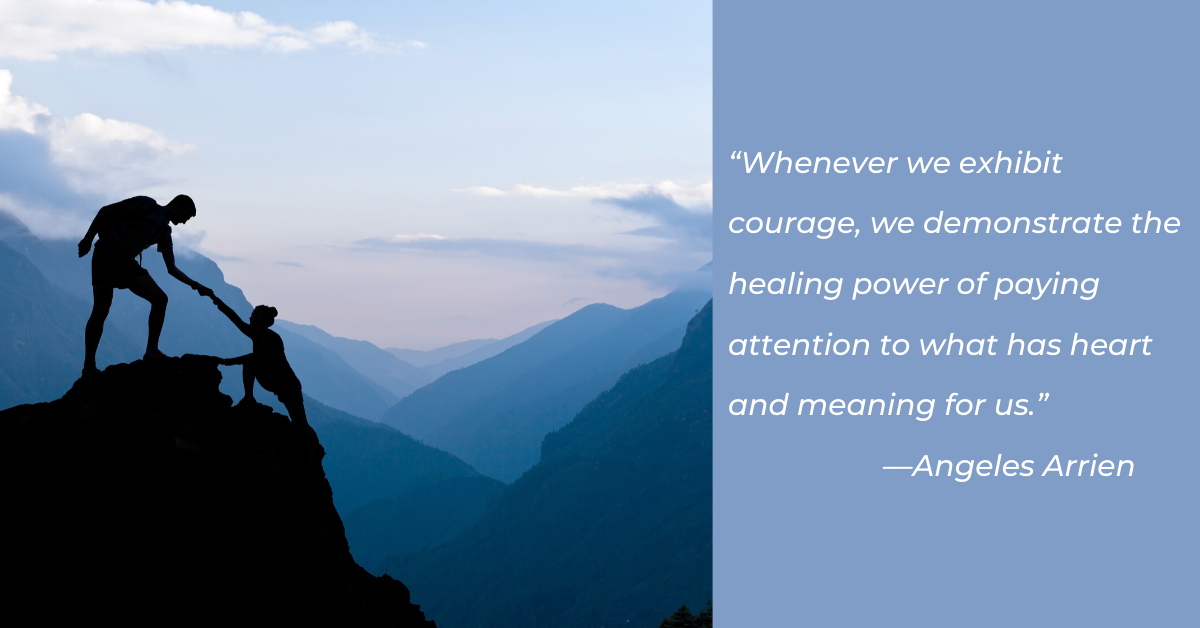Picture about seventy people crowded into a dimly lit room with a creaking, wooden floor of an old building at the edge of San Francisco Bay. It was the home of the Dolphin Club, a legendary swim club founded in 1877, and their board of directors called a meeting to propose a series of upgrades to its aging facilities. I was standing at the back of the room with a swim buddy listening to two directors present the board’s proposals.
As one of the directors paused to take a breath, several members jumped in with comments about what they didn’t like about the plan. Others called out questions that were thinly veiled criticisms: “Don’t you think these changes are too pricey for our members?” New to the group and lots younger than I am now, I was reticent to speak but raised my hand anyway. I said, “I’d like to hear more of your thinking. Please share your rationale for these proposed changes.”
This single question changed the tone of the meeting. The directors explained their thinking: the proposal was apparently the best of a series of well-considered options. Eventually, only a few changes were made to the proposal and the members recommended that the board proceed. Today, the building still stands and is now part of the San Francisco Maritime National Historical Park.
Perhaps my question does not sound courageous, but it took bravery for me to speak it at the time, and that courage made a big impact.
A few years later, Roger James and I consulted for an ambitious organizational redesign project in a prestigious teaching hospital in the southeast. The change initiative engaged hundreds of doctors, nurses, administrators, and staff. Based on what they had learned from these stakeholders, the Design Team had developed a series of substantial recommendations they believed would help the institution survive the dramatic changes in reimbursement rates from the state, and shift into providing more patient-centric care.
Despite the involvement and support for these recommendations throughout the organization, the organization hit a wall when it came time to implement them. During one conversation with the CEO, I noted that the project seemed to have stalled. “I am here to work with the implementation teams, but nothing is happening. I don’t want to waste my time or your money.”
Once again, speaking with this level of candor felt challenging in the moment, but my courage made a difference. The CEO quickly called a meeting with his leadership team, and another with all the players that were key to implementing the changes that were being proposed. My candor sparked a conversation among these leaders about the necessary changes they would need to make as a teaching hospital to shift from putting their teaching and research functions ahead of patient care.
What is courageous communication?
Angeles Arrien once described courage as the “ability to stand by one’s heart or to stand by one’s core.” Given my concerns that the work of the volunteer Dolphin Club Board would simply be dismissed or that the work of hundreds over a year’s time would fall by the wayside at the hospital, I knew I had to stand by my heart and speak up.
Years later, I more fully understand that courageous communication is the mental, physical, and emotional capacity to stay steady and connected to what is important to you in the face of fear, anger, obstruction, and conflict. It takes tenacity, commitment, patience, and a willingness to say what you think is true so you can stay true to your intentions and purpose.
I have come to experience courage and awareness as two sides of the same coin. Staying aware means noticing and accepting what is occurring in the moment on three levels: what is going on inside me, within a group, and the social context in which it is occurring. With greater awareness, I’m better positioned to be courageous enough to decide what, if anything, to say to make the situation more life-giving and constructive. And, if I am going to speak, to do so in a way that is helpful, not polarizing.
Courageous communication takes practice. Courage is not born of the moment. Like awareness, it can be developed by practicing it. The challenge is usually to say what you want to say in a way that can be heard without making the situation worse. My next blog will describe some practices that will allow you to communicate even more courageously and consciously than you do now.
A note about the quote: Angeles Arrien, Ph.D. was a Basque-American cultural anthropologist, award-winning author, educator, and consultant. I was a dedicated student of hers for several decades before her death in 2014. Her devotion to bringing indigenous wisdoms to the world is the foundation of my approach to consulting, teaching, and relating with others.


Just so as you know, in the UK “courageous” can have a slightly different connotation, especially if used in a corporate or (small-‘p’) political context.
In such situations, “courageous” can mean “risky”, as in “A courageous decision, Prime Minister” – meaning “This may lose you your job”.
But that aside, your point is well made. I would take it further. Often, the ‘courageous question’ is the one that everyone else would like to ask but doesn’t have the conviction to do so. The art of the ‘courageous question’ is framing it in such a way that removes the challenge from it, as in your example from the Dolphin Club meeting. Your question was at its heart little different from the more critical challenges, but you put it in such terms as made it answerable in an open way. You removed the criticism from the question, which enabled the respondent to make a reply which itself would not be counter-criticism, and so discussion and debate could move forward.
It seems to me that these skills are sorely needed in so much of our public discourse at the moment.